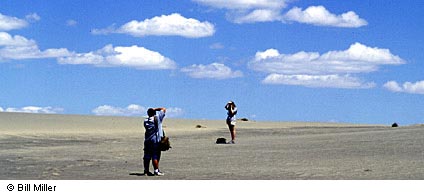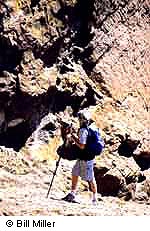
How early should your child make the step from the old point-and-shoot variety of camera to one with more sophisticated controls? The answer may require examining the nature of the child’s interest.Does it lie in creating images over mastering a technology, or visa versa?
I recently lead two groups of kids and young adults through photography workshops that were staged in a scenic region of Oregon.The skill levels of the participants ranged from absolute beginner to advanced beginner.Their ages ranged from twelve to eighteen years.At the outset, their interest levels seemed high.However, I couldn’t help wondering what I might be able to expect as I tried to sustain interest and provide inspiration while doing my best to both guide and teach.More importantly, I worried, would I survive three days in the desert with all these kids?
 It’s important to note that the kids were using both automatic and manual cameras, and while some of the equipment they brought was new, some was old.For the kids with low quality cameras, we provided brand new Minolta 35mm, single lens reflexes with interchangeable lens capability.
It’s important to note that the kids were using both automatic and manual cameras, and while some of the equipment they brought was new, some was old.For the kids with low quality cameras, we provided brand new Minolta 35mm, single lens reflexes with interchangeable lens capability.
The kids took the workshop and photography seriously.Every single youngster in the two workshops paid rapt attention to the instruction sessions and asked intelligent questions.They required little outside motivation to begin exploring for photographs.
What about their photos?The young participants all created good-to-excellent photographs.Some had more sophisticated vision than others, but all made very respectable showings.The kids were enthusiastic about the photos and were able to rate them from good to bad and favorite over non-favorite.Some shot as little as three rolls of film, while others shot as many as ten.It was a remarkable result from such a young group with little experience in photography.The products included landscapes, a sunrise, a sunset, detail shots of old buildings and pictures of each other.Some kids tried photography as an art all on their own.A few of the more social youngsters concentrated on groups and individual people.
How did the experience answer our question about at what age should a child move up to a sophisticated camera from the automatic variety?Remember, the kids worked well with automatic and non-automatic cameras.There were only a handful of bad exposures from both kinds of cameras.However, it was clear that the automatic cameras were easier to use.Technical issues were solved by the microchip inside the camera, so technical questions were not a problem.The kids were able to concentrate on the elusive value of a photograph—the photographer’s personal vision.Without vision, there can be no great photograph, so these kids were one step up on the older generation who are demanding, and buying, more and more sophisticated equipment.
For me, the workshops reinforced the idea that, for young beginners, good quality automatic cameras come with fewer stumbles, while more sophisticated cameras have a much slower learning curve.In the early stages, it’s just easier to learn photography with a camera that requires less advanced technical knowledge on the part of the photographer.Fewer technical distractions allow the photographer to concentrate on aesthetics.An automatic camera simplifies shooting by keeping the process simple.When the child wants to consciously control depth-of-field and stop-action (or blur action), then it’s time to move up to a better camera–but not before.
By Bill Miller

Leave a Reply